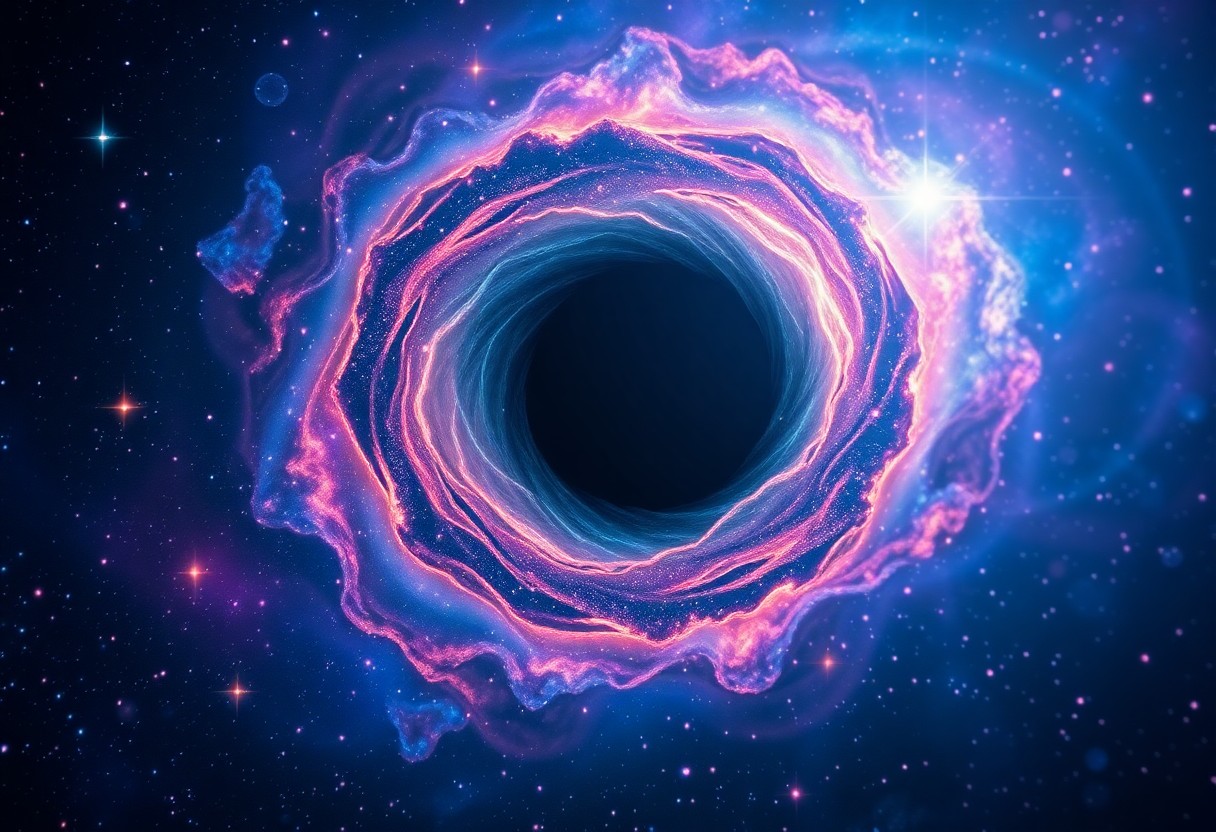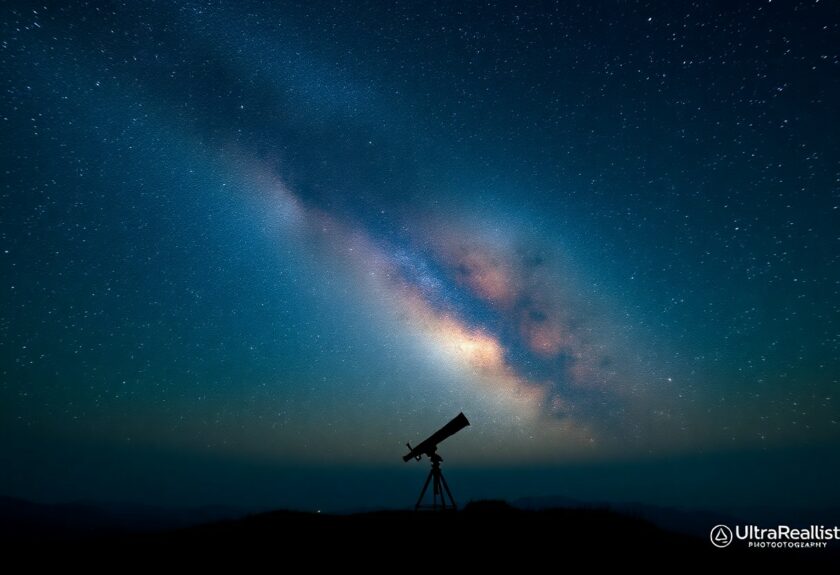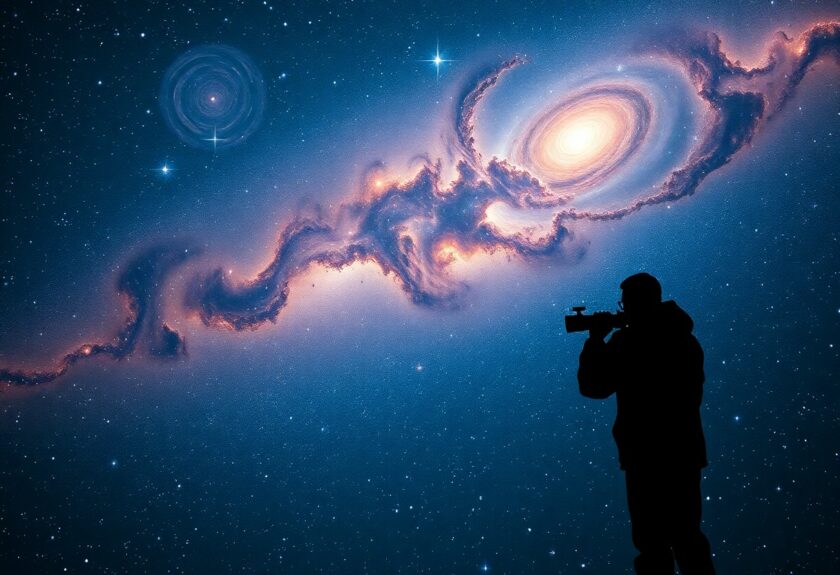Universe contains some of the most enigmatic phenomena known to science, and black holes stand out as particularly intriguing. As you begin on this journey into the depths of space, you’ll discover the fascinating nature of these invisible giants, their formation, and their role in the cosmos. Understanding black holes not only deepens your knowledge of astrophysics but also ignites a sense of wonder about the universe you inhabit. Join us as we explore the mysterious workings of black holes in this informative guide tailored just for you.
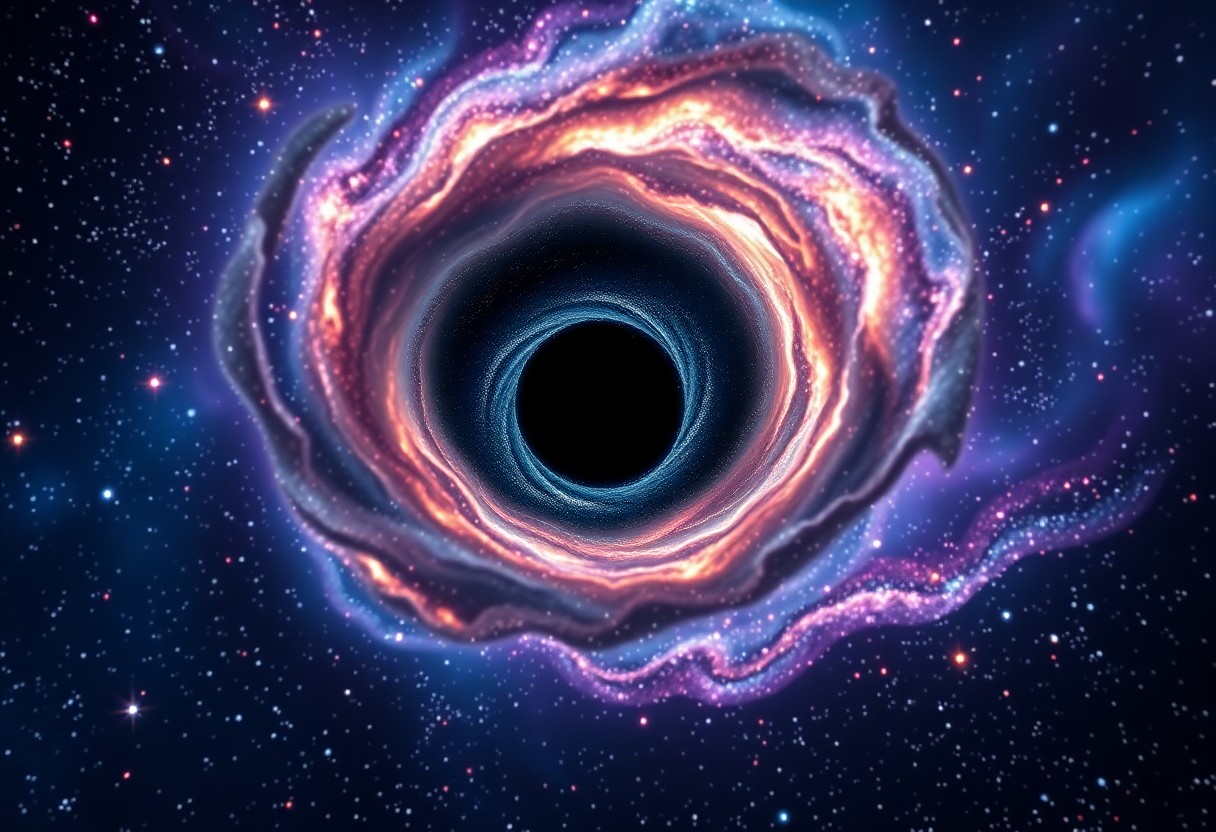
What Are Black Holes?
Before diving deeper into the concept of black holes, it’s imperative to grasp their fundamental nature and significance in the universe. These enigmatic celestial objects exert an immense gravitational pull, rendering them invisible to the naked eye, and they play a critical role in shaping the cosmos.
Definition and Characteristics
What defines a black hole is its extraordinary ability to trap anything that ventures too close, including light, hence their name. Characterised by an event horizon, this point of no return surrounds the singularity, where gravity is infinitely strong. Black holes are not just cosmic vacuum cleaners; they have unique properties that challenge our understanding of physics.
Types of Black Holes
Black holes can be categorised into several types based on their mass and formation. The main types include:
- Stellar Black Holes, formed from collapsing stars
- Supermassive Black Holes, located at galactic centres
- Intermediate Black Holes, thought to form from stellar collisions
- Primordial Black Holes, hypothesised to exist from the early universe
- Micro Black Holes, potentially created by high-energy events
Knowing the type of black hole can enhance your understanding of its behaviour and influence within its environment.
| Type | Mass |
| Stellar Black Hole | Up to 20 solar masses |
| Supermassive Black Hole | Millions to billions of solar masses |
| Intermediate Black Hole | 100 to 1000 solar masses |
| Primordial Black Hole | Variable, from tiny to massive |
Indeed, each type of black hole offers fascinating insights into the workings of the universe, revealing the complexities of gravity and astrophysics. You will find these categories not only help us comprehend their formation but also their impacts on surrounding stars and galaxies.
- Black holes are integral to galaxy formation and evolution.
- They can influence stellar orbits and galactic dynamics.
- Some black holes are thought to emit jets of particles at high velocities.
- Studying them enhances your knowledge of fundamental physics.
- Future discoveries may still alter our understanding of black holes.
Knowing more about these celestial wonders can illuminate your perspective of the universe and its unfathomable mysteries.
| Type | Formation |
| Stellar Black Hole | From supernova explosions |
| Supermassive Black Hole | Formed early in the universe |
| Intermediate Black Hole | Through mergers of stars |
| Primordial Black Hole | Created in the Big Bang |
The Life Cycle of a Star
If you’re intrigued by the cosmic journey of stars, understanding their life cycle is necessary. Stars form from vast clouds of gas and dust, igniting a chain reaction that leads to their birth, evolution, and ultimate fate. For further insights into teaching yourself about black holes, check out How can I teach myself about black holes? Not generally ….
Star Formation
One of the most fascinating processes in the universe is star formation, which begins in dense regions of molecular clouds. As gravity pulls the gas and dust together, the material clumps and condenses, eventually leading to the birth of a protostar, where nuclear fusion ignites and a new star is born.
Supernova and Black Hole Formation
Life for massive stars climaxes in a spectacular event known as a supernova. This violent explosion occurs when a star exhausts its nuclear fuel, causing its core to collapse under gravitational pressure. If the remaining mass is sufficient, it can lead to the formation of a black hole.
Understanding the transformation from a supernova to a black hole is pivotal in astrophysics. During the supernova, the outer layers of the star are expelled into space, enriching the surrounding environment with elements necessary for life. The core, however, collapses into an extraordinarily dense point, leading to the formation of a black hole. This transition highlights the balance of forces in stellar life cycles and the profound effects these celestial events have on the universe’s evolution.
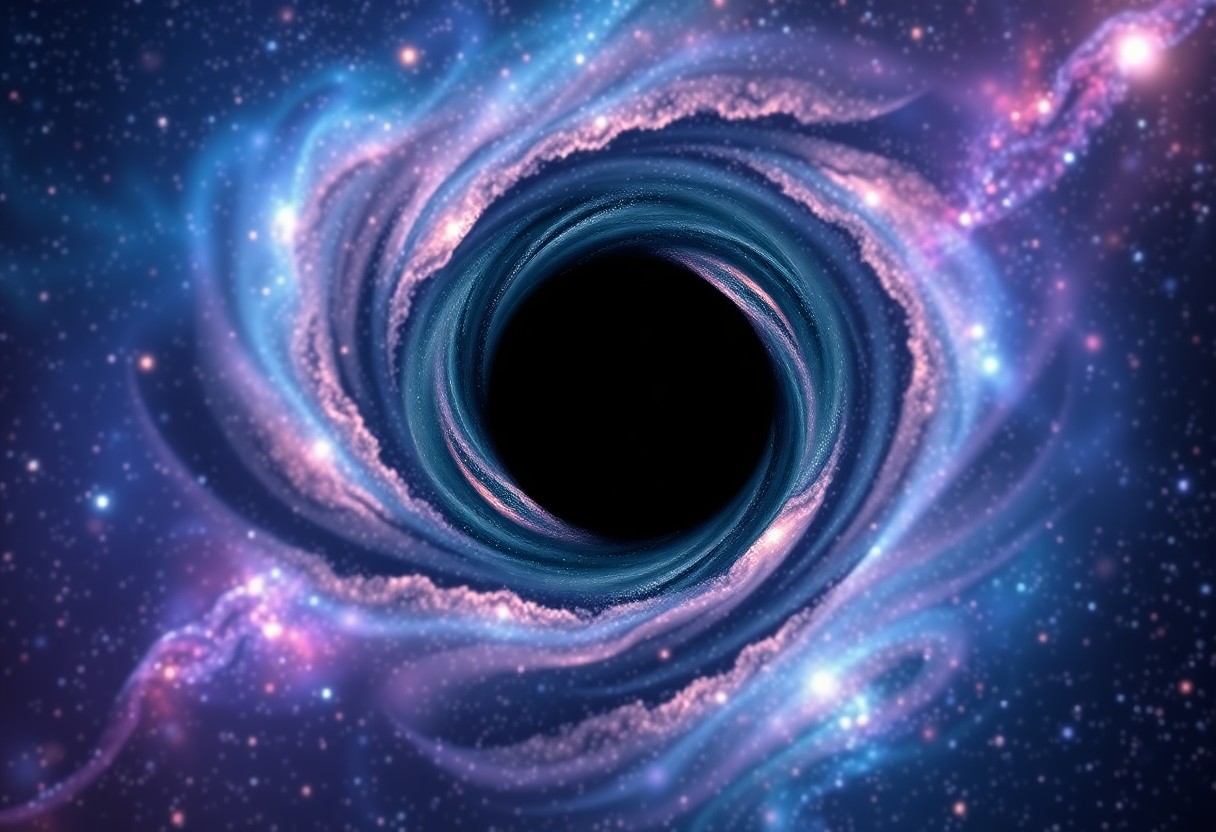
The Science Behind Black Holes
Now that you have a basic understanding of black holes, it is time to explore into the science that explains their formation and behaviour. Black holes challenge our perceptions of space and time, leading you to explore concepts that may seem beyond the ordinary realm of everyday experience. Through a combination of established theories and groundbreaking discoveries, you will uncover how these enigmatic entities fit into the wider universe.
General Relativity
Science plays a pivotal role in understanding black holes, with Albert Einstein’s General Relativity serving as the foundation for your exploration. This revolutionary theory posits that gravity is not merely a force but a curvature of spacetime caused by massive objects. Consequently, when a star exhausts its nuclear fuel, it collapses under its own gravity, leading to the formation of a black hole, thus reshaping the very fabric of the universe around it.
The Event Horizon and Singularity
General features of a black hole include the event horizon and the singularity. The event horizon is the point beyond which nothing can escape the gravitational pull of the black hole, while the singularity represents an infinitely dense core where the laws of physics as you know them cease to apply. Understanding these concepts helps you grasp the complex nature of black holes and their mysterious properties.
Due to the extreme nature of black holes, it is imperative to comprehend their event horizon and singularity. The event horizon acts as a one-way barrier; once something crosses it, it cannot return to your observable universe. Within this boundary lies the singularity, where matter is thought to be infinitely compressed. Here, the normal laws of physics break down, presenting an intriguing enigma that challenges your understanding of reality and forces you to reconsider the very nature of existence itself.
Observing Black Holes
Once again, you find yourself delving into the enigmatic realm of black holes. Despite their elusive nature, astronomers have developed innovative methods to study these fascinating celestial objects. By piecing together various forms of evidence and employing distinct observational techniques, you can begin to unravel some of the secrets they hold.
Evidence of Existence
For centuries, scientists have sought tangible evidence of black holes, and they have unearthed numerous indicators that confirm their existence. Observations of star movements around unseen masses, gravitational waves, and even the first-ever image of a black hole’s event horizon have provided compelling proof that these cosmic entities are not mere theoretical constructs.
Techniques Used in Observations
Alongside advancements in technology, you will encounter a variety of techniques that astronomers utilise to observe black holes, from radio telescopes to X-ray spectroscopy. Each method offers unique insights, allowing you to probe deeper into the behaviour of these extraordinary objects.
But a closer examination of these techniques reveals a fascinating interplay between technology and astronomy. For instance, radio telescopes like the Event Horizon Telescope combine data from multiple sites to create a virtual Earth-sized observatory, which is instrumental in capturing images of black holes. Additionally, X-ray observatories detect high-energy emissions generated by material being pulled towards black holes, providing you with a glimpse of their dynamics. By leveraging spectroscopy, astronomers can analyse the light emitted from surrounding gas, revealing the immense gravitational effects at play. Therefore, through these sophisticated techniques, your understanding of black holes expands immeasurably.
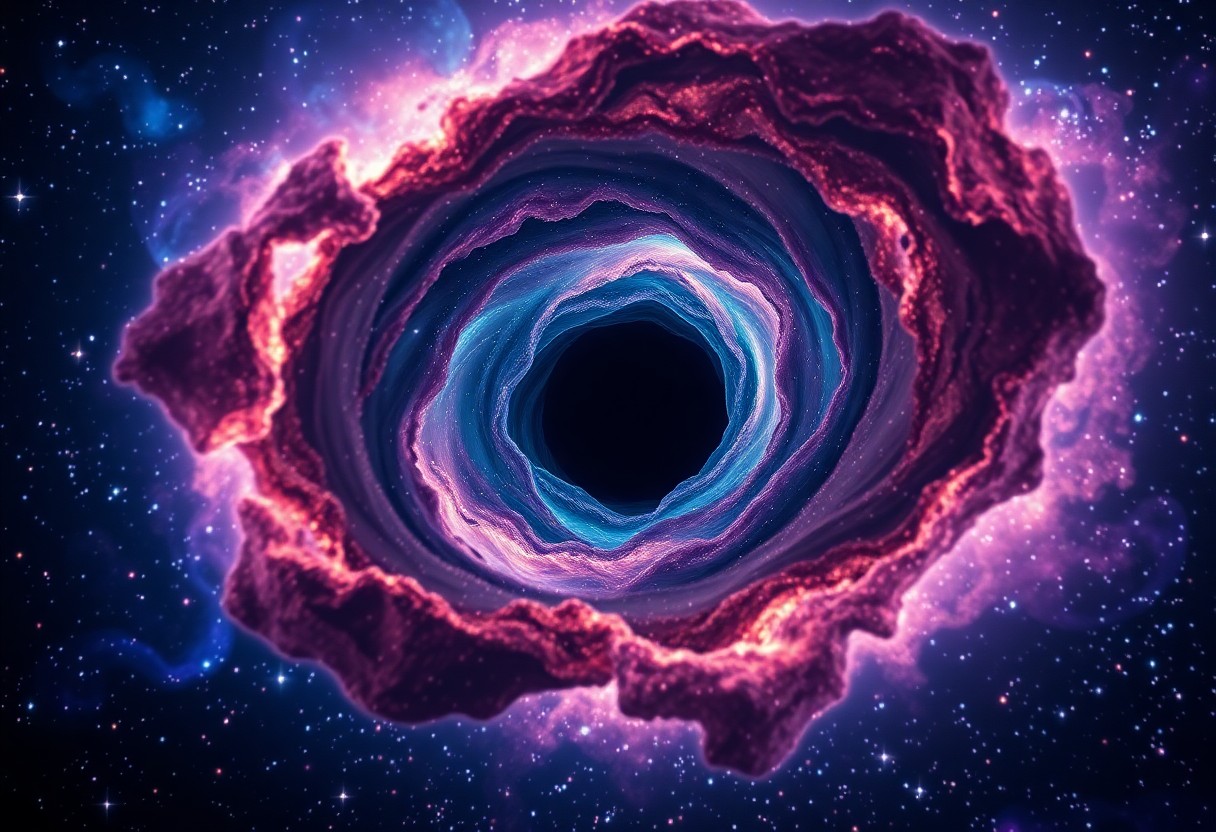
Black Holes and the Cosmos
Not only are black holes fascinating cosmic entities, but they also play a pivotal role in shaping the universe as you know it. Their immense gravitational pull can influence the motion of stars and the structure of galaxies, suggesting that these enigmatic features are not just anomalies but vital components of the cosmos.
Their Role in Galaxy Formation
Against the backdrop of cosmic evolution, black holes help to guide the formation of galaxies. Their gravitational forces attract surrounding matter, which aids in the accumulation of gas and dust, ultimately leading to star development and the emergence of galactic structures.
Theoretical Implications for Cosmology
Galaxy formation is deeply intertwined with the existence of black holes, presenting intriguing theoretical implications for cosmology. The presence of supermassive black holes at the centres of galaxies may influence how these galactic structures evolve over time, leading you to reconsider established theories about the cosmos and the forces governing it.
Consequently, the study of black holes and their impact on galaxy formation can provide profound insights into the fundamental workings of the universe. As you explore these relationships, you may find that they challenge your understanding of gravity, dark matter, and the expansion of the cosmos, opening avenues for new theories that could redefine your perspective on astronomical phenomena.
Common Misconceptions
Keep in mind that black holes are often misunderstood phenomena in the cosmos. Many people imagine them as giant vacuum cleaners that indiscriminately suck up everything around them. In reality, black holes are not cosmic monsters; rather, they have specific gravitational fields that only affect nearby objects, similar to any massive celestial body.
Myths about Black Holes
After delving into black hole myths, you may find that many misconceptions stem from popular media. One prevalent myth suggests that black holes can devour the entire universe. This is misleading, as black holes can only influence objects within their immediate vicinity, and their effects diminish with distance.
Clarifying Popular Beliefs
Below, you will uncover the truth behind some common beliefs about black holes, offering clarity amidst the confusion. For example, many people mistakenly believe that crossing the event horizon of a black hole is akin to being sucked into a whirlpool. This is an oversimplification; while the event horizon represents a point of no return, the journey towards it is not as perilous as it is often depicted.
With an understanding of these distinctions, you can better grasp how black holes operate in the grand scheme of the universe. They are not insatiable beacons of destruction but rather enigmatic structures that demonstrate the complexities of gravity and spacetime. By dispelling these myths, you can appreciate the true nature of black holes and their fascinating role in the cosmos.
Summing up
Drawing together the fascinating concepts explored in this guide, you now hold a foundational understanding of black holes and their role in the cosmos. As you examine deeper into the universe’s mysteries, your curiosity will drive you to further explore the science behind these enigmatic entities. Embrace your journey of discovery, as each revelation sheds light on the vast complexities that shape our understanding of the universe, ultimately enriching your knowledge and appreciation of the cosmic realm.

